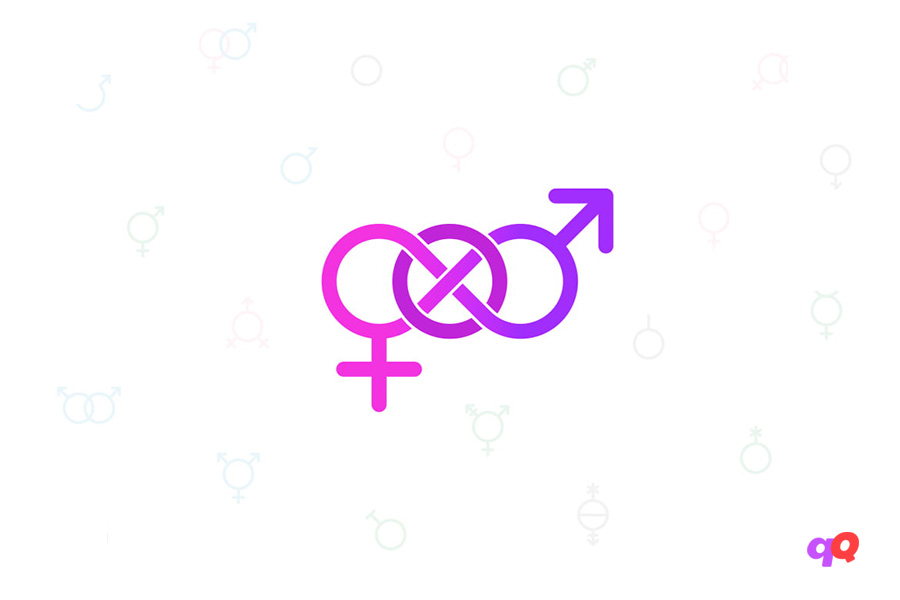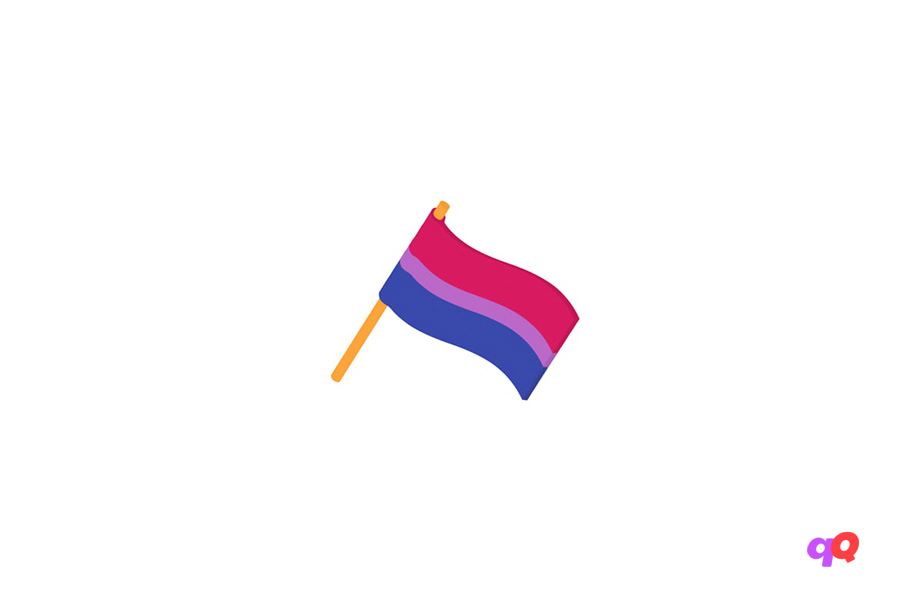Abrosexual Quiz: Chameleon of Love?
○ DISCLAIMER
The quizzes and content on this website are designed for entertainment purposes only and should not be used as a basis for making personal decisions about your sexuality, gender identity, or any other life choices. These quizzes are not diagnostic tools and cannot determine your identity or orientation. If you're questioning your identity or need support, we strongly encourage you to seek guidance from qualified LGBTQ+ friendly professionals or counselors. Remember that your journey of self-discovery is unique and personal to you.

Imagine that your sexuality isn’t a static picture in a frame, but a living kaleidoscope where patterns constantly shift, creating new captivating combinations. Does this sound familiar? Perhaps you’ve already wondered why your attraction to people can change dramatically over time. It’s precisely for such seekers of answers that the “Am I Abrosexual?” quiz was created, helping to navigate the amazing world of fluid sexuality.
What is Abrosexuality?
Abrosexuality is a form of sexual orientation where a person experiences changeable attraction that fluctuates between different genders or completely disappears for certain periods. The term comes from the Greek “abro,” meaning “delicate” or “graceful,” which metaphorically reflects the fluidity and changeability of this orientation.
Imagine an ocean with its tides and ebbs – this is exactly how abrosexuality can be described. During one period of life, a person might experience strong attraction to women; several months later, this attraction might shift to interest in men, then to people outside the binary gender system, or transition entirely into a phase of asexuality.
It’s important to understand that abrosexuality isn’t a whim or indecision. It’s an innate characteristic, just as valid as any other sexual orientation. People don’t choose to be abrosexual – they simply realize that their attraction naturally evolves.
Signs of Abrosexuality: The Foundation of Our Quiz
Our quiz is built on key markers of abrosexuality that have been identified through research and personal stories. Each test question is designed to reveal specific patterns of attraction changeability, helping you understand whether your experience resonates with the abrosexual spectrum. Let’s examine the main signs our test is based on.
Cyclical Nature of Attraction
The first and most obvious sign is regular changes in objects of attraction. These cycles can last days, weeks, months, or even years. Some abrosexuals describe this as “sexual seasons” – just as nature changes from spring to summer, their attraction transforms from one form to another.
Intensity of Experiences
When attraction shifts occur, it’s not just a light change in preferences. Abrosexuals often describe these transitions as deep, almost physically tangible transformations. One person shared: “It’s as if someone switched the channel in my brain – yesterday I was crazy about masculine energy, and today I’m exclusively attracted to feminine softness.”
Periods of Asexuality
Many abrosexuals go through phases when sexual attraction is completely absent. This isn’t depression or hormonal imbalance – it’s a natural part of their cycle. During such periods, they may feel completely comfortable without romantic or sexual relationships.
Emotional Turbulence
Constant changes can cause internal conflict, especially in a society that expects stable sexual identity. Many abrosexuals go through periods of doubt: “Who am I really?”, “Why can’t I make up my mind?”, “What’s wrong with me?”
Relationship Challenges
Imagine being in a relationship with a person of a certain gender, and your attraction suddenly shifts. This creates unique challenges requiring open communication and understanding from your partner.
Abrosexuality Compared to Other Orientations: What’s the Difference?
Abrosexuality is often confused with bisexuality or pansexuality, but the differences are fundamental:
- Bisexuality implies stable attraction to two or more genders simultaneously. A bisexual person might prefer different people at different times, but the attraction to multiple genders itself remains constant.
- Pansexuality means potential attraction to people regardless of their gender. Pansexuals are “gender-blind” in their attraction, which also remains relatively stable.
- Demisexuality requires an emotional connection for sexual attraction to arise, but doesn’t imply changes in gender preferences.
- Sexual fluidity is a broader term describing any changes in sexual orientation. Abrosexuality is a specific form of fluidity with pronounced cycles.
The key difference of abrosexuality is not just changing preferences within a stable orientation, but complete transformation of the orientation itself. It’s like the difference between choosing different dishes at your favorite restaurant and completely changing your culinary preferences every few months.
Why Do People Take Abrosexuality Tests?
- Searching for Identity in a World of Labels
In an era where every aspect of human experience has a term, many seek a word that precisely describes their experiences. The abrosexuality test provides an opportunity to find a community of like-minded people and understand that you’re not alone in your experience. - Experience Validation
Years of not understanding your own changeability can be exhausting. Many take the test to get confirmation: “Yes, what you feel is real. It has a name. You’re not broken.” - Practical Considerations
Understanding your abrosexuality helps in building relationships. You can discuss possible changes with your partner in advance, find relationship formats that will be comfortable for both parties. - Psychological Well-being
Research shows that people who can name and accept their sexual identity experience less anxiety and depression. The test becomes the first step toward self-acceptance. - Educational Function
Even if a person doesn’t turn out to be abrosexual, taking the test expands understanding of the spectrum of human sexuality. This promotes greater tolerance and empathy in society.
The “Am I Abrosexual?” quiz is a tool of self-discovery that helps people better understand their unique nature. In a world where changeability is often perceived as weakness, recognizing your abrosexuality becomes an act of courage and honesty with yourself.
Remember: your sexuality is your personal journey. Regardless of test results, it’s important to treat yourself with love and acceptance. After all, the beauty of human sexuality lies precisely in its diversity and the uniqueness of each experience.
○ Related Quizzes
Questions Overview
- Pretty much never. It’s stable
- Only when there’s a significant event in my life
- Occasionally, but not daily
- Like the weather—unpredictable and ever-changing!
- I still have the same crush intensity
- I might find someone else attractive, but it's related to their character development
- I've shifted my attention to another character, but it’s rare
- I’ve had crushes on multiple characters already!
- Constant and predictable
- There were one or two noticeable shifts
- It's been a roller-coaster of feelings!
- A kaleidoscope of ever-changing attractions
- "Oh, I’ve never felt attracted to them."
- "I used to find them attractive a while back."
- "Last week, yes! This week, not so much."
- "Ask me in an hour; it might change!"
- Steady as a beating drum
- Sometimes the winds change direction
- It’s like surfing different waves
- Dancing to a different tune every day!
- A single-themed novel
- A book with a couple of plot twists
- A short story collection
- A daily mood ring's diary
- I’ve found one that fits and stuck with it
- They’re comforting but can sometimes feel restricting
- I use a few interchangeably
- Labels? More like suggestions for the hour!
- Always been the same one
- Changed maybe once or twice in my life
- Depends on my mood each year
- Seasons? I’m changing faster than they are!
- It's pretty simple and consistent
- There's a general pattern, with a few exceptions
- It's fluid and can be a bit unpredictable
- I need a whiteboard, markers, and possibly interpretive dance
- I always have a consistent type
- I've explored a bit, but mostly have a specific type
- My type varies depending on my current phase
- What’s a type? I’m redefining mine all the time!
- Reflects one specific feeling or mood
- Has a few diverse tracks thrown in
- It’s a blend of genres and moods
- Is on shuffle and changes weekly!
- One solid color
- A color that sometimes shifts shades
- A gradient of multiple hues
- A tie-dye explosion!
- A lifelong novel
- A trilogy series
- A magazine with various articles
- An unpredictable choose-your-own-adventure book
- Mostly monochromatic paintings
- A few varied pieces among a consistent theme
- Collections that shift in style and color
- Every canvas wildly different from the last
- A very specific kind of person
- Generally one type, but open to some changes
- Whoever I might be attracted to in that phase of life
- Who knows? The sky's the limit!








Uh
im so damn confused